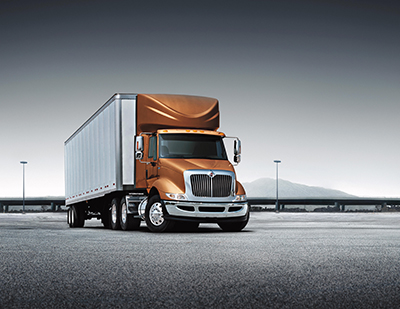Newly public Schneider, Werner bright spots in dull Q2 TL earnings picture
Schneider National, the nation’s second-largest truckload carrier, celebrated its first quarter as a privately held truckload giant by posting $46.5 million in quarterly profit, exceeding analysts’ expectations.
Schneider’s performance was one of the few TL bright spots in the second quarter along with Werner Enterprises, the nation’s fourth-largest TL carrier. Werner enjoyed a 27 percent surge in net profit in the second quarter to $23.2 million on $519.5 million revenue
Schneider’s profit rose 5.2% compared with a year ago when it earned $44.2 million as a privately held company in 2016. Industry analysts had predicted Schneider Q2 earnings to be around $40 million.
Schneider ended more than eight decades of private ownership by going public on April 5, netting the founding Schneider family about $230 million, according to a report in the Milwaukee Journal-Sentinel. Going public also allowed Schneider to pay down about $150 million in debt, as well as capital for investments.
Schneider CEO Chris Lofgren said he was “pleased” with its performance in all three operating segments—truckload, intermodal and logistics. He cited several “key customer wins” that he said might set the stage for even better results in the second half of 2017.
“Freight market dynamics improved throughout the quarter,” Lofgren said. “Much of what we’ve faced thus far in 2017 stemmed from customer contracts that were negotiated during 2016 and inflationary driver costs that persisted into the second quarter.”
Truckload revenue rose 4.5% to $543 million but operating income fell 14% to $53.2 million. Schneider added business from the Watkins & Shepard and Lodeso acquisitions in June 2016. Dedicated TL revenue rose 3.4% to $176.2 million and for-hire truckload revenue rose 5.1% to $366.9 million.
Intermodal revenue increased 3.8% to $194.3 million, but operating income slipped 18% to $11.2 million. Third-party logistics revenue rose 7.2% to $191.8 million, but operating income dropped 19% to $6.6 million.
“Improved volume and tractor and container productivity were not able to overcome the impact of the competitive pricing environment and the increase in duplicative costs due to the conversion from leased to owned chassis” in intermodal, Schneider said in a statement.
Overall, the second quarter was a tough one for many large publicly held TL carriers. For examples, Patriot Transportation Holding’s profit plunged 67 percent from the year-ago quarter. Team driving TL specialist Covenant Transportation Group was off 58 percent. Swift’s profits were off 39 percent and Knight Transportation was off 17 percent. Knight and Swift are planning to close on their merger plans in September.
Truckload executives said it was not a profitable environment in the second quarter as shippers are pressing carriers for rate reductions on contract renewals. Fuel surcharge revenue also is declining.
“The market pressures of the first quarter continued into the second quarter,” Lofgren said. “However, in June indications of improving market conditions began to appear. July is always a challenging month. But we are cautiously optimistic that the market will see strengthening in the second half of 2017.”
Adding some further pressure to TL volumes was a slight surge in intermodal in the second quarter. Total intermodal volumes gained 4.5 percent in Q2, the strongest growth in nearly three years, according to the Intermodal Association of North America's Intermodal Market Trends and Statistics report. International once again was the primary driver, rising 5.6 percent; domestic containers and trailer volumes increased 3.2 percent and 3.9 percent respectively.
“Growth in Q2 indicates that economic conditions continue to improve for all segments of the intermodal market. Year-to-date performance is a healthy 3.3 percent, notwithstanding a weak year-over-year comparison for the second quarter,” Joni Casey, president and CEO of IANA, said in a statement.
The seven highest-density trade corridors, accounting for 63.4 percent of total intermodal volume, collectively were up 4 percent in the second quarter. The Trans-Canada lane led the way with an 11.4 percent expansion, according to IANA.
Investors might want to keep a wary high on the leading TL stocks, including Schneider, Knight-Swift, Werner and others, as a leading indicator on where the overall economy is headed. Transport stocks are worth watching because their weakness can presage tumbles for the more widely watched Dow Industrials. The mainstream theory on Wall Street is if transports fare poorly, the broader U.S. stock market might soon follow suit.
There was a surge of spot market freight to close out July. DAT Solutions, which closely tracks the TL sector, said it's unusual to see an uptick in volumes at this point in the summer, but the top 100 van lanes set all-time records for load volumes in the last week of July. DAT gets its research from a data base of more than $33 billion in freight invoices.
DAT said the number of available loads increased 2% the last week of July while truck posts edged down 2% compared to the previous week. National average load-to-truck ratios stayed firm: the van load/truck ratio was 5.3, up from 4.8, while flatbeds remained at 36.1 and reefers held at 8.5. Typically, July is a month when spot truckload freight activity begins to decline.
DAT said that led to an uptick in load posts on its load boards, but rates didn't respond accordingly. DAT said weaker reefer load counts are likely to blame. If reefer demand had materialized, those trucks would be competing for van freight. Instead, the extra capacity kept rates down, according to DAT surveys.













